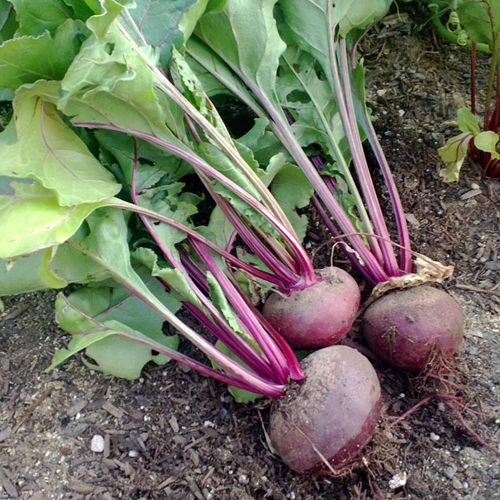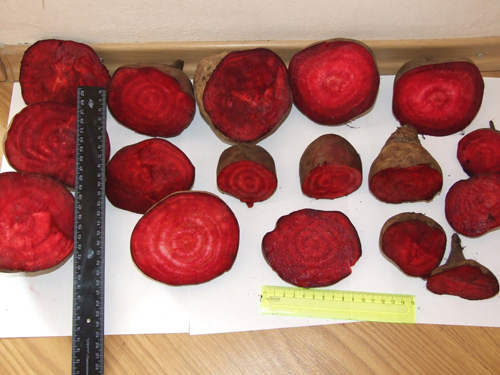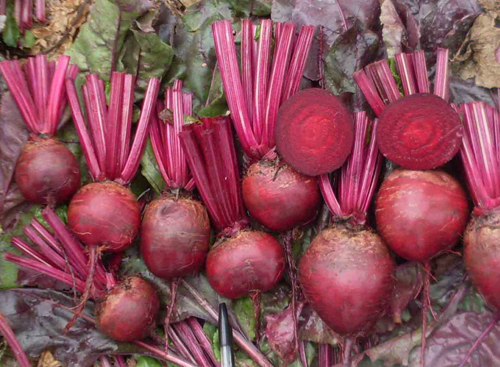Beet variety Detroit
Beets are well known and respected among gardeners, many of whom have favorite and proven varieties that have been sown for decades. These include Detroit, bred by Italian breeders and registered in 1994. In 1997, it was entered into the State Register of Plants of the Russian Federation for the Central and Far Eastern regions. Recommended for growing in garden plots, in personal and small farms. Suitable for open ground. It is successfully cultivated in Moldova and Ukraine.

Description
Plant of medium height, with a semi-erect rosette consisting of small oval leaves perched on long cuttings. The leaf blade is bright green with red-violet anthocyanin veins. Surface with slightly noticeable blistering, waviness is observed along the edge. The petiole has a reddish-purple tint.
The root crop is leveled, small, rounded, without flaws. The axial root is thin, very short, red in color. Weight - 111 - 212 grams. The skin is smooth, red. The pulp is dense and tender, does not contain tough fibers, dark red in color, without ringing. Good taste. 100 g of a vegetable contains: dry matter 17.6 - 20.4%, total sugar 12.3 - 14.2%.
Characteristics
- The variety is mid-season - the period from germination to technical maturity is 82 - 97 days;
- ripening occurs amicably, the yield of marketable products is 362 - 692 c / ha, which is 10 - 88 c / ha higher than the Bordeaux standard 237;
- the output of marketable products is at the level of the standard - 82 - 91%;
- beets are resistant to flowering and shooting;
- the culture is plastic, adapts well to climatic changes;

- cold resistance allows Detroit to be cultivated in cool areas, where slight frosts often occur;
- disease resistance is good;
- perfectly tolerates transportation over long distances;
- can be stored for a long time without losing taste and marketability;
- refers to table types, the purpose is universal. A raw vegetable is good in vitamin salads, it is also stewed, boiled, pickled, canned. The juicy pulp is suitable for making vegetable juices.
Due to its excellent characteristics, breeders decided to use Detroit as the basis for creating subspecies. New varieties have early ripening, beautiful rounded roots with a smooth surface, dark red or burgundy hue. The pulp is used for cooking and preservation. Features:
- Detroit Dark Red - high in sugars;
- Detroit 6 Rubidus - grows well even in shaded areas, tolerates frost;
- Detroit 2 Nero - Not prone to nitrate build-up. Stores well.

Agrotechnics
You can grow this variety of beets by seed or seedlings. For cultivation, sunny places are allocated. Before planting, the soil is dug deeply and fertilized. Seeds are sown in late April - early May. The planting depth is 2 - 4 cm. In cool regions, the bed can be covered with foil. Seeding rate - 1 - 1.5 g / m². The seedling method will allow you to save on seed and get a crop a little earlier than usual. Seeds are sown for seedlings in early April. Seedlings are planted in the ground after about a month. Landing scheme:
- row spacing - at least 20 cm, more can be done so that it is convenient to care for;
- between plants in a row - about 10 cm.
Until the root crop has formed, it is often watered. In the future, the frequency of humidification is reduced to 1 time per week. After watering, the soil must be loosened. Fertilizers must be balanced. An excess or deficiency of the basic elements - nitrogen, potassium and phosphorus - will negatively affect the culture. The landing site should be well lit.
Detroit beets can be called a promising crop due to their high yield, ease of maintenance and excellent keeping quality. Good disease resistance makes it possible to obtain an environmentally friendly product, as the number of treatments is reduced. The evened fruits with excellent taste are appreciated in the culinary arts.Cold resistance allows cultivation in cooler regions. When performing simple agrotechnical techniques, there will be no problems with growing the variety.









I have all deeply cracked in the area of the leaf outlet, and 5 other varieties sown at the same time - no. The leaf rosette is powerful, the root crop is not large in comparison. Not impressed.